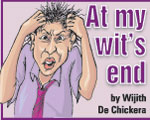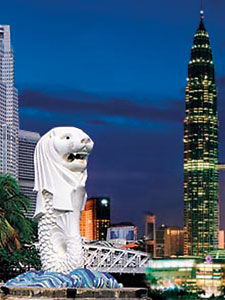In a lovely little city-state south-east of our land, the utopian dream of a previous generation is being lived out by five million people. It is a highly urbanized metropolis. But more than a concrete jungle, the impression its teeming masses of visitors get is that of a garden city.
 |
And the fact that half of Singapore’s 700 square km (270 square miles) is covered by lush, multi-hued, well-maintained greenery helps. On the macroeconomic scale, it is easy to understand why this city never sleeps – and when it does, its dreams are of dollars and a destiny written in gold. More US$ millionaires per capita call Singapore their home than any other city in the world – and you can tell by the Lamborghinis and other super-luxury sports cars that crawl along at a sedate 120 km/h on expressways that make other aspirants in the region look like dirt tracks to the back of beyond. Its economy is up there with those of world leaders in several key areas. It has the globe’s second biggest gambling ensemble, the third largest oil refinery centre, the fourth leading financial market, and one of the five busiest ports in the world.
That the World Bank consistently ranks Singapore as one of the easiest – if not the easiest – places on the planet to do business makes it the envy of rivals in the region, to say nothing of the cynosure of global business and industrial tycoons. The fact that the Lion City is estimated time and again by Transparency International in its Corruption Perceptions Index as being among the least corrupt countries counts for much in South East Asia, a region notoriously riddled with graft.
The Lion City has other attractions for both visitors and residents alike. The buses and trains run on time with no extra effort on the part of passengers or transit authorities taken in tandem. Cabbies and checkout-counter clerks are equally diffident and delightfully efficient. Everything is signposted. Including in Little India, which was something of a laugh. Shopping malls by the multiple score and a plethora of consumer oriented plazas keep the abacuses busy. The main airport at Changi is a real live working model of how to make international air travel a pleasure when it is in fact a chore. Safety and security is nobody’s concern, although it is everybody’s business – even if the sense that Big Brother is watching you (CCTV abounds) cannot be quite shaken off even in Xanadu where Kubla Khan a stately pleasure dome decreed.
To us, this Asian Tiger – one of four – has many lessons.
The least of which is the ease with which life, liberty, and the pursuit of happiness comes to its citizens and permanent residents.
The greatest of which is the sense of pride and accomplishment that a once merely rapidly developing nation can take in joining and beating the developed countries at their own game because it came up with a great strategy at the outset and stuck to its guns against all opposition.
The most striking of which is that Singapore is the dream city built by that same political and socio-economic architect who looked to Ceylon as it was in the heady days of the first flush of freedom in our early independence era – and benchmarked on us some of what he would subsequently do.
For our leaders, a visit to the past, present, and future of Singapore might be prudent – to say nothing of giving our agenda for growth, development, and progress a shot in the arm.
The past, when Singapore suffered a generation or two of hardship to secure its architect’s vision.
The present, where the Lion City basks in the sun (tempered by sudden but short-lived downpours, such that the joke is that even these are regulated) of economic vitality coupled with egalitarian intercultural activity.
The future, which is being grasped with both hands – even if some nettles threaten to sting lightly, as the leaders of the city-state recently indicated might happen due to the interconnectedness of nations along the economic continuum.
In the final analysis, this entrepot transcontinental hub is a compact test tube model of a dynamic republic that works efficiently for all concerned – warts and all. In fact, the warts are so hard to spot that we suspect they are part of the urban legends around Singapore that comprise its charm and charisma. Those critics who carp and cavil at the cost of the beautifully synchronized clockwork city they live in are doing a disservice to the price paid by a previous generation who lived and died in the mud so that Singapore might reach for the stars. |



